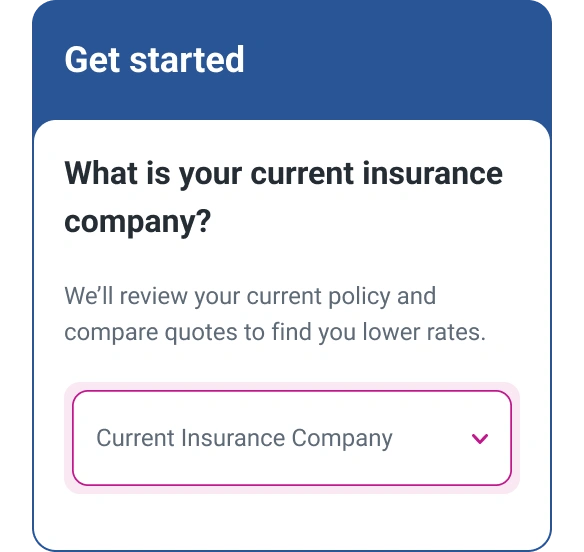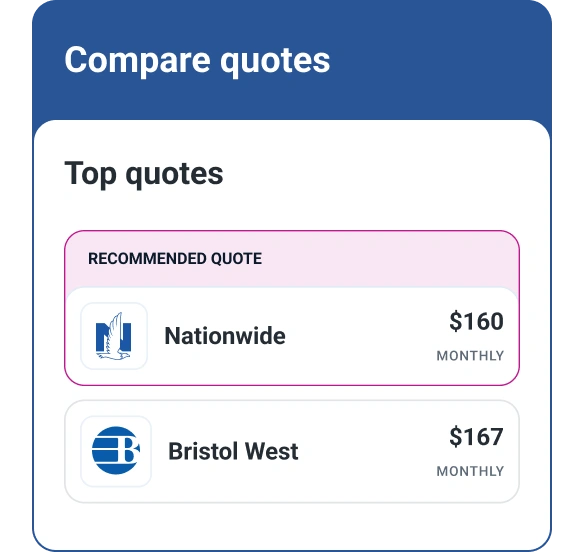Why Did My Comprehensive Insurance Get More Expensive?
Quick Answer
Higher comprehensive insurance rates are often a result of a recent claim for damage caused by something other than an auto accident. Understanding why rates rise can help you determine the best ways to save money on car insurance.

Flipping through your mail, you open the latest auto insurance bill and, bam, there it is: a new sky-high premium that has you wondering why your car insurance rates went up.
The answer may be obvious if you've recently received a speeding ticket or were involved in a car accident. But sometimes, your auto insurance bill is higher because of a rate hike in your comprehensive auto insurance—the part of your coverage that pays for non-collision-related vehicle damage.
Your comprehensive car insurance rate may increase if you file a claim for certain incidents, such as damage from a fire or a broken windshield. Higher comprehensive coverage costs are likely one reason the price of auto insurance has soared 20.6% over the last year, according to the U.S. Bureau of Labor Statistics.
Why Did My Comprehensive Insurance Get More Expensive?
The cost of your comprehensive insurance might increase if you file a claim, live in an area with high crime or bad weather, or if repair costs rise.
Filing a claim for something comprehensive insurance covers—like vandalism or a cracked windshield—could result in higher prices. In addition to filing claims, insurance carriers also consider the probability of filing claims when adjusting rates. So, if you live in a location with a high level of theft, weather-related damage or other comprehensive claims, your insurer may compensate for the added risk by raising your comprehensive insurance premiums.
Your comprehensive premiums also rise when your insurer raises rates across all types of coverage. They can even increase for reasons outside your control. For example, your auto insurance company may boost premiums to cover the rising costs of repairing or replacing vehicles.
What Does Comprehensive Insurance Cover?
While collision insurance covers damage from an accident with another vehicle or object, comprehensive coverage pays for damage caused by non-collision incidents, such as:
- Vandalism
- Car theft
- Fire or explosion
- Storms, hail, floods or other weather-related events
- Hurricanes, earthquakes and other natural disasters
- Cracked or broken windshield
- Falling trees, branches, telephone poles or other objects
- Collision with an animal, such as a deer
- Civil disobedience, including a riot
Comprehensive car insurance covers many unforeseen events beyond your control, which can happen besides being involved in an auto collision. This is why it's also known as "other than collision" coverage. Still, comprehensive coverage doesn't cover everything, such as in the following circumstances:
- General wear and tear: Comprehensive insurance won't pay to replace old tires or mechanical repairs or other costs that come with car ownership.
- Vehicle damage incurred while driving: Comprehensive insurance won't cover damage from a falling tree, rock or telephone pole. Notably, hitting an animal is a rare incident where comprehensive insurance pays for vehicle damage you incur while driving.
- Stolen items from your car: Check to see if these items are under your renters or homeowners insurance policy.
- Liability or medical expenses: Medical treatments you or your passengers require as a result of a non-collision event may not be covered by comprehensive insurance.
Do I Have to Have Comprehensive Insurance?
If you finance your car, your lender likely requires you to carry full coverage car insurance, including collision and comprehensive policies. Lenders want to make sure your vehicle can be quickly repaired or replaced whether you're in an accident or your vehicle sustains damage from unforeseen events. The additional coverage helps protect your car's value if you default on the loan and the lender is forced to sell the vehicle to recoup their loss.
However, comprehensive insurance is considered optional if you own your car outright. If your car is older and has extensive mileage, you may consider dropping the comprehensive insurance. However, there are some factors to consider before canceling this coverage, including:
- The price of replacement parts: If you drive an expensive vehicle, the cost of replacement parts may be higher than your deductible, making it worthwhile to keep your comprehensive coverage.
- The value of your vehicle: An older vehicle with a lower value might not be worth the ongoing cost of carrying comprehensive and collision insurance. Remember, the maximum your insurer will pay is the value of your car minus your deductible amount. According to Insurance.com, the average annual cost of comprehensive car insurance is $263 per year and $723 for collision insurance.
- Your budget and risk tolerance: While dropping comprehensive coverage from your auto insurance policy may save money, it exposes you to financial risk if your car is damaged by a hailstorm, falling object or another non-collision event. That means you'd have to pay for repairs or replacement out-of-pocket, which could be expensive. A substantial repair bill could even force you to take on credit card or loan debt to finance repairs.
How Can I Save Money on Car Insurance?
Comprehensive insurance is fairly affordable, but if you're looking for ways to lower your car insurance premiums, here are some ways you can save money:
- Shop and compare providers. Comparing multiple auto insurance providers can help you find the best balance of low premiums and your desired coverage. You can visit insurance company websites or call them directly to obtain quotes. Alternatively, you may save time by using an online marketplace like Experian's auto insurance comparison tool that collects insurance quotes and displays them side-by-side for quick evaluation.
- Increase your deductible. Raising your car insurance deductible tends to lower your monthly premiums and vice-versa. According to a 2023 study by The Zebra, boosting your deductible from $500 to $1,000 results in an average savings of 13% of your total annual insurance rate. Deductible amounts typically range from $0 to $2,500. Before increasing your deductible, make sure you can afford to pay more out of pocket if you need to file a claim.
- Remove unnecessary coverage. Another way to snag lower car insurance premiums is to drop coverage you don't use or need. For example, you might not need to pay extra for roadside assistance if your credit card issuer, car manufacturer or auto club already provides it. Similarly, if your car is old and worth less than a few thousand dollars, consider removing comprehensive and collision insurance to save money.
- Take advantage of discounts. Auto insurance carriers commonly offer discounts for safe driving habits, low mileage and bundling your auto insurance with other policies like homeowners or renters insurance. Still, it's wise to ask your carrier if you qualify for any lesser-known discounts they may offer. For instance, if you've recently been married or joined the military, let your provider know. You may be eligible for discounts that save an annual average of 6% and 2.6%, respectively.
- Drive the right vehicle. The type of vehicle you drive plays a significant role in the price of your monthly premiums. Generally, inexpensive economy vehicles with affordable replacement parts usually have lower insurance premiums than luxury vehicles with expensive parts.
Improve Your Credit Score to Potentially Reduce Car Insurance Rate
Your comprehensive car insurance rates may have increased if you recently made a claim for a non-collision event, such as damage from vandalism or a falling object. Thankfully, several cost-saving strategies, such as switching car insurance providers or increasing your deductible, can lower your auto insurance premiums.
Another way you may lower your car insurance costs is to improve your credit score. Remember, most states allow auto insurers to review your credit-based insurance score when setting premiums. Before you shop for an auto insurance policy, check your credit score and credit report for free to see where your credit credit stands and, if necessary, take steps to improve it to potentially save on car insurance.
Don’t overpay for auto insurance
If you’re looking for ways to cut back on monthly costs, it could be a good idea to see if you can save on your auto insurance.
Find savingsAbout the author
Tim Maxwell is a former television news journalist turned personal finance writer and credit card expert with over two decades of media experience. His work has been published in Bankrate, Fox Business, Washington Post, USA Today, The Balance, MarketWatch and others. He is also the founder of the personal finance website Incomist.
Read more from Tim

